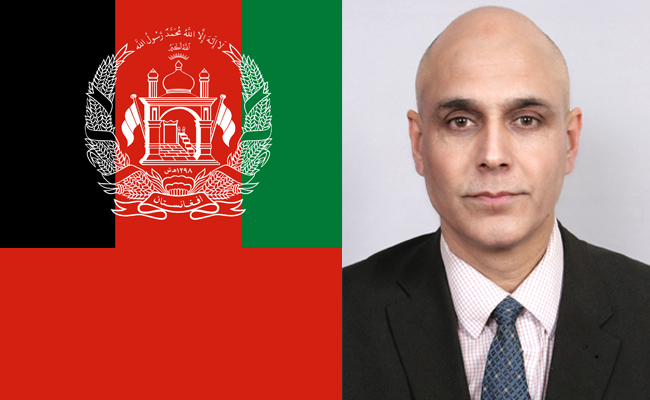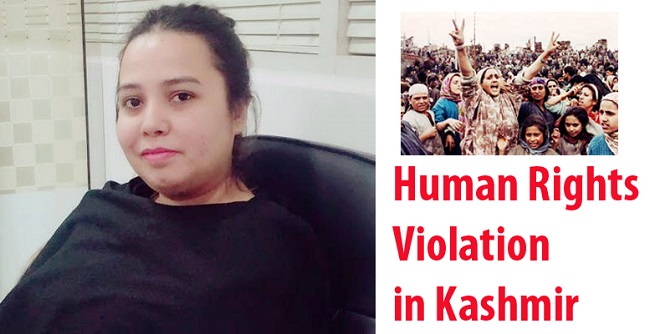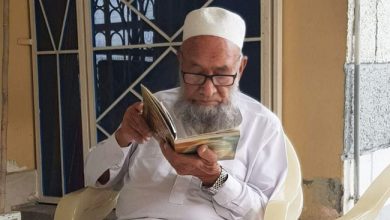The Violations & Abuses of Human Rights in Afghanistan

Written By: Qasim Swati (United Kingdom)
Officially known as the Islamic Republic of Afghanistan, the word ‘Afghanistan’ is a combination of the root name “Afghan”, historically, referring to a member of the ethnic Pashtuns, and the suffix “-stan”, which means ‘place of’ in Persian. Thus, the word, Afghanistan, means “The Place of Pashtun (s).” Literally, the word ‘Afghanistan’ is referred to or translated as “Land of the Afghans or “Land of the Pashtuns” to be more specific. Nevertheless, any citizen of Afghanistan shall be referred to as ‘Afghan’, according to the modern Constitution of Afghanistan (Constitution of Afghanistan: 2004).
Having a significant geo-strategic position in the world, Afghanistan is bordered by Iran in the west; Pakistan in the south and east; China in the far northeast and Turkmenistan, Uzbekistan and Tajikistan in the north. It has an area or territory of about 652,230 square kilometres or 251,830 square miles, with a population of 31,575,018, as estimated in 2018.
Nicknamed as the “Graveyard of Empires”, Afghanistan has been experiencing and witnessing various military campaigns and revolutions in its history, tracing back to as far as Alexander the Great (330 BCE) and right down to the attacks by the United States and its NATO allies since 2001 to present.
Keeping in mind the turbulent, warring and combating history of the country, this is quite obvious that many human rights abuses and violations can be conducted and perpetrated in a country, like Afghanistan. However, if we study the history of human rights violations in Afghanistan, we will see a clear difference between the actors of human rights abuses in Afghanistan and any other country. For instance, we have the example of human rights violations in Myanmar, where most of the human rights are violated by the security forces, particularly by the Burmese military. Similarly, if we look at the human rights abuses and violations, for example, in Yemen, we will come to know that the government or armed forces of Yemen and the Houthi rebels, backed by Iran, are the main perpetrators in committing such human rights violations. In the same way, the Syrian armed forces, helped and supported by Russia and Iran, commit human rights violations in order to keep President Bashar Hafez al- Assad in power. Likewise, most of the human rights in the Indian Occupied Kashmir are carried out and conducted by the security forces of the Indian government.
Unlike the main roles played by the relevant governments or the concerning security forces of the countries in violating the rights of people, the major players or actors of human rights violations and abuses in Afghanistan seem to be the external elements, forces, different armed groups and, specifically the insurgents or anti-government armed factions in the country rather than the Afghan government or its security forces themselves. In other words, no one can exempt the Afghan government or its security forces from blaming for human rights violations in Afghanistan, because they have also committed countless human rights violations in the country so far, but the study shows that the external forces, elements, armed groups and insurgents have carried out more human rights abuses and violations than that perpetrated by the Afghan government and its security forces, as evident from the findings and results of the situation in Afghanistan.
The human rights violations, carried out in Afghanistan, include violence against women (such as maltreatment of women in different ways, discrimination against them on various grounds in the society, imprisonment and punishment of women for certain activities in the name of ‘morality or honour crimes’ and the practice of virginity examinations or testing, etc.); violations of human rights of children (like treating them violently, the use or practice of child labour, abusing them both sexually and physically, using them for different illegal and inhuman purposes, such as suicide bombers, child soldiers and weapon carriers, etc.); attacks on civilians by armed insurgents and other groups; disrespect for the rule of law in the country and impunity for perpetrators of human rights; discrimination against ethnic minorities and persons with disabilities; the absence of investigation and accountability in resolving the cases of anti-women violence; forced or compulsory labour and the practice of bonded labour; widespread government corruption; violent behaviour against journalists; extrajudicial killings by security forces; arbitrary arrest, detention, torture and forced/enforced disappearances of people, etc.
Human Rights and Women in Afghanistan: The Afghan people, particularly the Pashtuns, have a long history of helping, respecting and supporting the womenfolk, children and the weak of the society. This is deemed as cowardly, inhuman and uncivilized to disrespect and ignore such traditions, as helping the poor, the weak, the needy, the elderly, female population and children in any Afghan or Pashtun community. Thus, women, children, helpless and disabled people are supported, helped and respected by others in Afghanistan and in other Afghan communities, around the world, in some way.
However, there is a continuous discrimination against the women on certain grounds in various ways in the Afghan society. Although both men and women are equal and have equal obligations and rights before the law, according to the constitution of Afghanistan, yet women made up just 7 percent of the workforce and continued to be discriminated and ill-treated in the workplace, as reported in the Country Reports on Human Rights Practices for 2017, by the United States Department of State, Bureau of Democracy, Human Rights and Labour/Labor. Similarly, married and older women also faced hardships while looking for jobs. In spite of legal assurances and pledges from the government and the constitution, women do not get proper and equal representation in the politics of the country due to certain elements in the political, social, religious and economic structure of the country.
Women in Afghanistan are also victims of sexual violence and sexual harassment in different manners, ranging from rape, forced (mostly arranged) marriage, early or underage marriage, ‘baad’ marriage (a pre-Islamic method of settlement and compensation whereby a female from the criminal’s family is given to the victim’s family as a servant or a bride, and is still practiced in specific regions of Afghanistan and Pakistan, mostly among the Kochis) or as defined by the US Department of State, Bureau of Democracy, Human Rights and Labour in its Country Reports on Human Rights Practices for 2017 on Afghanistan, as (the practice of settling disputes in which the culprit’s family trades a girl to the victim’s family). Nevertheless, such practices, as underage, forced and ‘baad’ marriages are invalidated and criminalized by the law and a woman is given the option to have a spouse or husband of her own choice (choice marriage or more specifically but controversially, love marriage), yet the situation is the other way round in practice in the Afghan society.
Another internationally condemned practice, conducted against women in Afghanistan, is the use or practice of the unscientific and abusive ‘Virginity Examinations or Testing’, which is a procedure of inspecting or examining the genitalia (the genitals or the organs of reproduction, especially the external organs) of a female in order to determine whether a girl or woman has had vaginal intercourse or not. This is also referred to as per vaginal, two-finger or hymen testing or examination, in which a doctor inserts a finger inside the vagina of the female for checking the degree or level of vaginal laxity (lack of strictness or looseness of a limb or muscle) to assess if the woman or girl is habituated to sexual intercourse.
Even though Afghanistan is not the only country where this sort of practice takes place, as the same procedure is also carried out in such other countries, as Uganda, Turkey, Swaziland, Sri Lanka, South Africa, Palestine, Jordan, Iran, Indonesia, India, Egypt, Bangladesh and even there are reports of the use of virginity examinations in such western and European countries, as the Netherlands, Sweden, Spain and Canada, as described in the Virginity Testing: a systematic review by Rose Mckeon Olson and Claudia Garcia – Moreno and can be accessed at www.ncbi.nlm.nih.gov.
However, despite “the new penal code, signed into law by presidential decree on March 4 and scheduled to take effect in February, containing language criminalizing virginity tests performed without the consent of the woman and a court order” (as reported in the Country Reports on Human Rights Practices for 2017 by the United States Department of State, Bureau of Democracy, Human Rights and Labor), the forced virginity testing is still considered as legal in Afghanistan. As a result, the so-called virginity examinations are still continued to be ordered by judges, prosecutors and police for dealing with such moral crimes, as adultery (zina), which has so many physical, social, marital/matrimonial, psychological and emotional negative outcomes, consequences and repercussions for the victims of such tests and practices.
Afghanistan: Human Rights and Children: Like women, the majority of children in Afghanistan are not treated properly and have been stripped of their legal and constitutional rights (taken away from them) they deserve to live as normal human beings. They are used and abused in different ways.
According to Humanium (an international child sponsorship NGO, founded in Geneva in 2008, and dedicated for stopping the violations of children’s rights around the world), “Only 60% of Afghan children are sent to school and only 28% of the adults in the country are literate. Because of numerous problems, faced by the Afghan people, about 20% of the children are supposed to work in order to support themselves and their families.” (https://www.humanium.org/en/afghanistan: www.humanium.org).
Some of the hardships encountered and faced by children in Afghanistan include child labor/labour, lack or unavailability of sufficient education facilities, the absence of juvenile justice, no right to identity, child or early marriages, bad situation of disabled children, improper life conditions for orphaned children, the use of child soldiers (using children as soldiers, both by the government or security forces, the different armed groups and the insurgents), poverty, the shortage and paucity of health facilities, exploitation and violence against children (including physical, sexual, psychological and emotional abuse and torture) as mentioned in the same report by Humanium.
As a result of a long war in Afghanistan, a huge number of children have been left orphans, as they have either lost both or one of their parents, particularly their fathers, in the fighting throughout the country. Such orphaned children are not treated appropriately and most of them are subjected to inhuman, degrading and violent practices by different sorts of perpetrators, predators and brutal people in different ways.
Civilian Casualties: If we look deep into the history of Afghanistan, we will come to know that the majority of Afghans are a peace-loving people, who are inclined to avoid conflict or aggression and help the week, the poor and those who need their help. Most of them want to get better education, have nice lifestyles, live a civilized life and contribute to the global community positively. Thus, there are a great number of such Afghan people who side neither with the security forces nor with the insurgents nor any other armed factions. Instead, they struggle to lead a peaceful and pleasant type of life in some way. However, the war in Afghanistan has taken so many civilian lives in every part of Afghanistan most of the time. For instance, it is reported by the Human Rights Watch in its World Report 2018: Afghanistan, that the fighting between Afghan government and Taliban forces has caused high number of civilian casualties. The report keeps on to say, as “A number of particularly deadly suicide attacks in urban areas, some claimed by ISKP (Islamic State of Khorasan Province), killed and wounded more than 2,000 people across the country.” Similarly, the United Nations Assistance Mission to Afghanistan (UNAMA) documented, in the same report, some 2,640 war-related civilian deaths and also stated that around 5,379 civilians have been wounded during the first three quarters of 2017.
Likewise, many innocent people have been kidnapped, attacked, tortured, abused, taken into illegal custody, arbitrarily arrested and detained, imprisoned, kept into humiliating, inhuman and cruel conditions, injured and killed both by the security forces, the other various warring armed groups and the insurgents or rebels.
But how can we stop human rights violations in Afghanistan? Who is responsible for creating such situations and circumstances that led to as many abuses of human rights in the country? Who should end the current humanitarian disaster in the whole of Afghanistan?
The answer to the aforesaid questions is that this is not only the responsibility of the Afghan government to resolve the issue, but the entire international community must play an effective and decisive role in stopping further human rights violations in the country. Therefore, all the nations of the world, including Russia, the United States, Canada, China, India, Pakistan, Iran, the European Union and the Arab countries, specifically the Kingdom of Saudi Arabia, should play an active and positive role in bringing peace to Afghanistan and improve human rights situation in the region, because all these countries have always played their part in the game and used their influence for protecting their own personal and vested interests and benefited from fighting in Afghanistan in some way.
Qasim Swati is a freelance journalist, writer and human rights activist, based in the UK, and can be reached at: https://qasimswati.com or qasimswati2003@yahoo.co.uk.
Disclaimer: The views and opinions expressed or referred to in this article do not necessarily represent those of WNTV or any of its staff or editors. WNTV’s aim is to provide, so far as possible, a platform for external contributors with limited editorial intervention. Accordingly, readers are asked to note that the publication of articles on this site is not in itself to be taken as WNTV’s endorsement of any reported third party position, policy or statement.





